2018 Jeep Grand Cherokee Interior
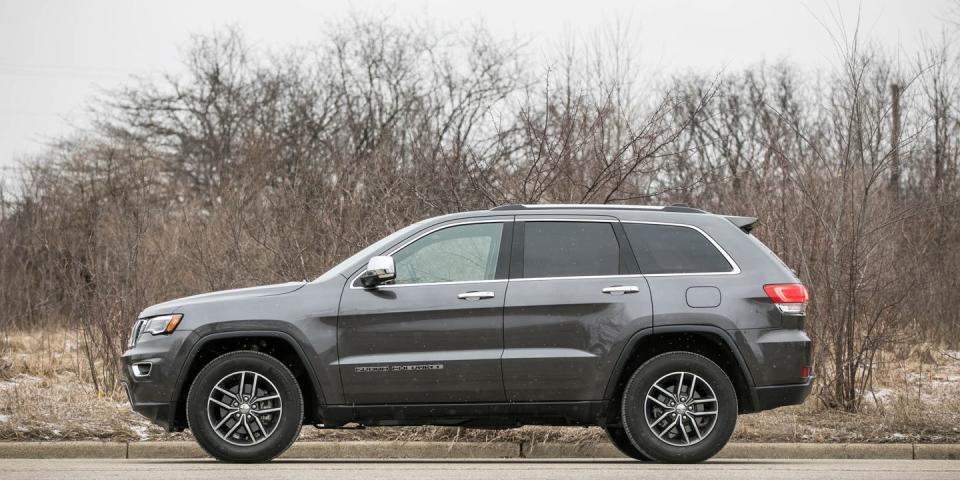
An interior full of high-tech features, easy-to-use controls, and comfortable seating make the Grand Cherokee an agreeable companion. Its material quality and panel fit and finish need some polish, but the cabin looks and feels durable and stylish.
What’s New for 2018?
Not a whole lot. The new Sterling Edition trim that celebrates the Grand Cherokee’s 25th anniversary has real metal interior accents, a leather-trimmed instrument panel and center console, and perforated leather seating with ornate stitching. The High Altitude trim returns for 2018 and features perforated nappa leather seating and gunmetal interior trim. The Summit trim can be ordered with a Premium Metal package that, like the Sterling Edition, decorates the cabin with genuine metal accents. Base Laredo trims see an updated, patterned-cloth seat fabric, and high-lux Overland models can be ordered with a brown-colored interior.
2017 Jeep Grand Cherokee
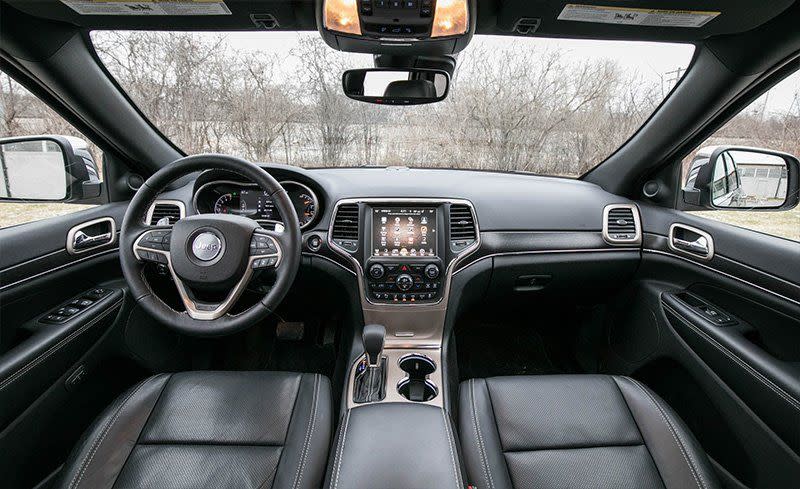
Interior Space Comparisons
Headroom in both the Grand Cherokee’s front and rear seats is good, but legroom is limited when compared with its rivals.
Front Seats
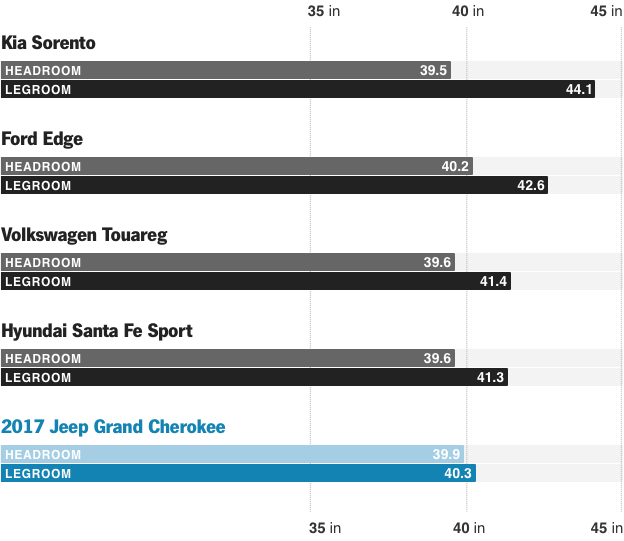

Back Seats
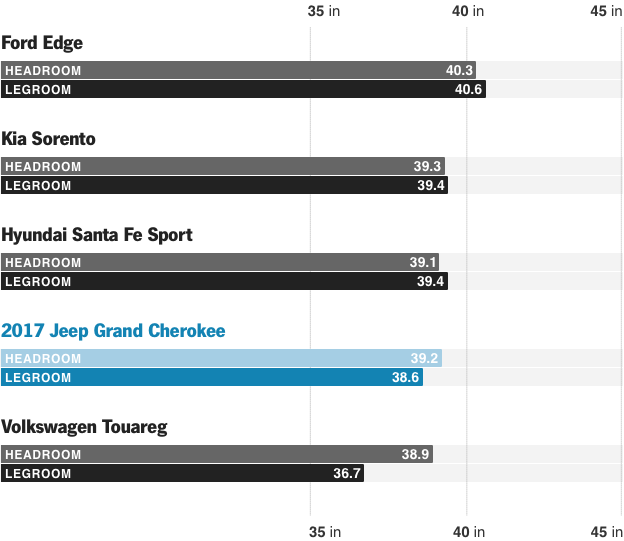
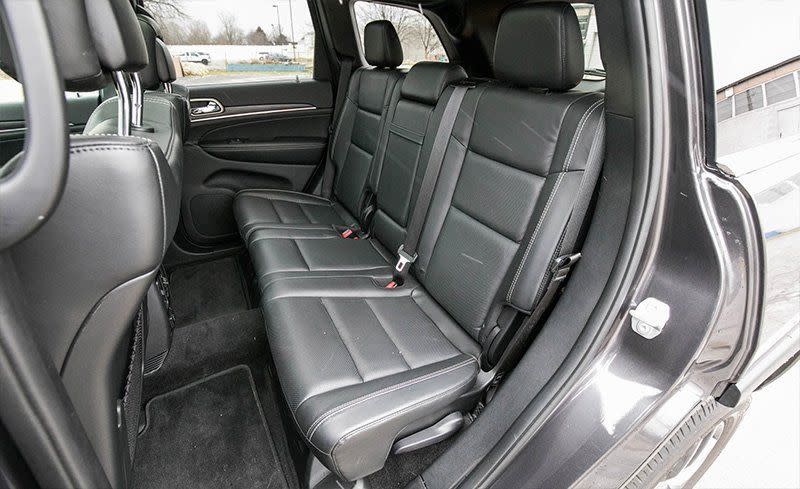
Interior Features
Stepping into the Grand Cherokee’s cabin provides either a sense of ruggedness or luxury depending on the model. The contoured dashboard houses an infotainment touchscreen atop chunky, redundant buttons and controls, and a 7.0-inch driver-facing LCD display is flanked by analog gauges. Jeep designers use soft-touch materials and leather where it counts—armrests, upper door panels, the dashboard—but cheaper hard plastic persists elsewhere. Altogether, the interior design is convincingly upscale, with all controls within easy reach. We noticed panel-fit inconsistencies throughout the cabin, but not enough to raise eyebrows.
Climate-control functions are handled through the Uconnect infotainment system; we often found this frustrating, as there are no redundant buttons elsewhere to make quick changes to airflow. The system is intuitive and easy to use, though, and buyers will acclimate themselves to this quirk in short order.
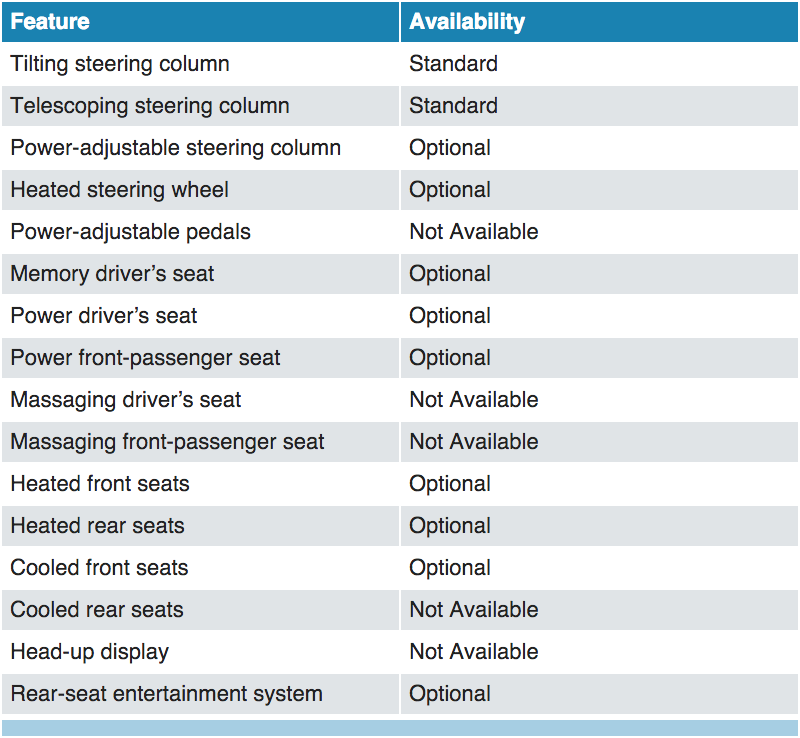
Seat Adjustments
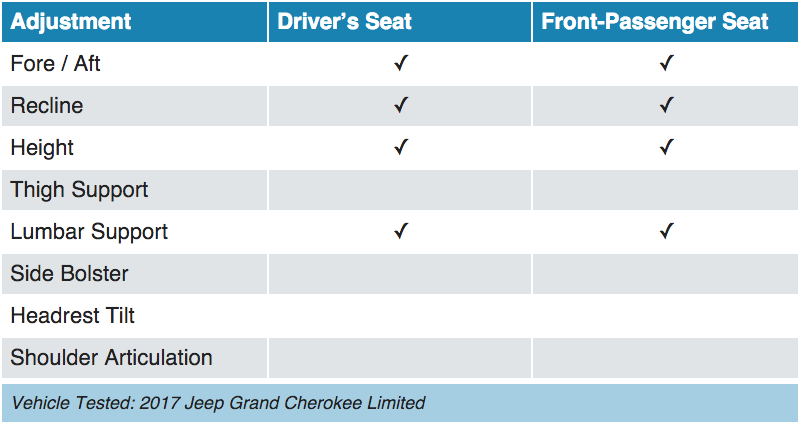
Climate Control

Cupholder Location
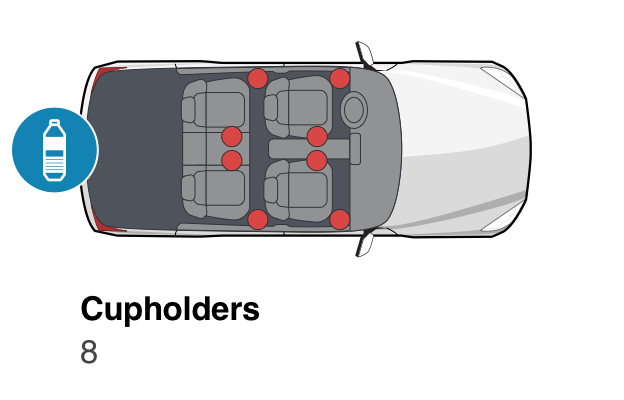
Vehicle Tested: 2017 Jeep Grand Cherokee Limited
Interior Sound Levels
Modern cabins do an excellent job of insulating passengers from ambient noise, but none can completely eliminate the sharp sound of the wind and the drone of tire noise when you’re traveling at highway speed. To measure the interior sound-pressure level, we use a Brüel & Kjær Type 2250-L sound meter, which we position in the middle of the first row of seats at the height of the driver’s ear. The meter automatically averages 15 seconds of sound in A-weighted decibels (dBA), taken while the test car is cruising at 70 mph. (A-weighting is an industry standard that adjusts decibel readings to better reflect how the human ear hears various frequencies.) We take two measurements and average the results. We also correct for speedometer inaccuracies with our GPS-based data loggers. It is worth noting that decibels are a logarithmic unit, so a rating of 40 decibels isn’t twice the sound pressure of 20 decibels; it is 10 times the sound pressure. A six-decibel increase roughly doubles the sound pressure.
Test Results: Interior Sound Levels at 70 mph
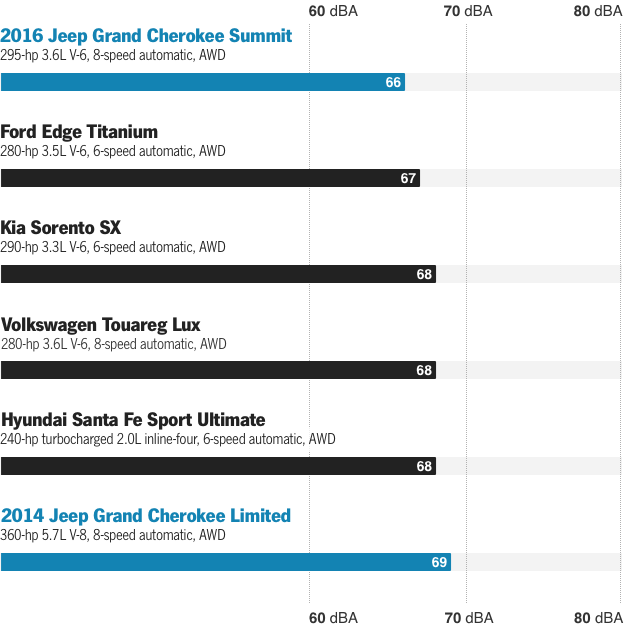
Seating and Step-In Height
The Grand Cherokee’s seating height is the highest here, a boon to drivers who prefer a towering view of the road. To accurately measure seating height—the distance from the road to the driver’s hip—we use an H-Point Machine (HPM), a precisely engineered device marketed by SAE International. This versatile tool, along with some lasers and simple trigonometry, also reveals the width and location of roof-pillar visibility obstructions. Our H-Point Machine and laser measurement tools determine the length of road obscured by the hood as well as the road obscured by the trunk or hatch (as seen through the rearview mirror).
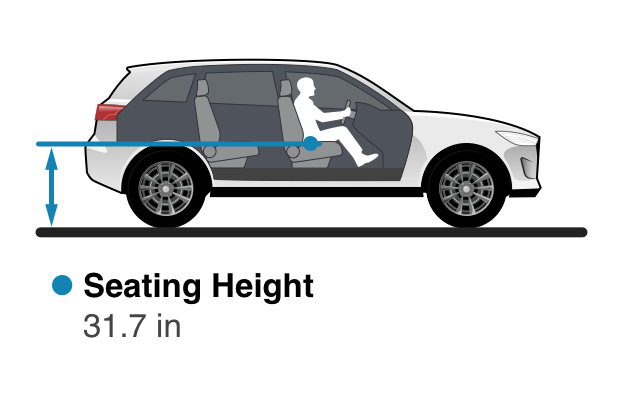
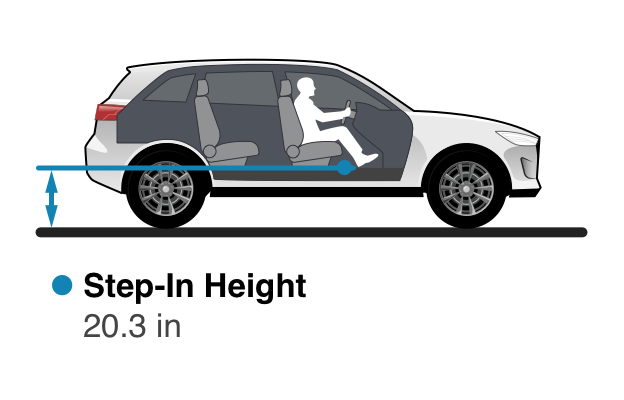
Test Results: Seating Height
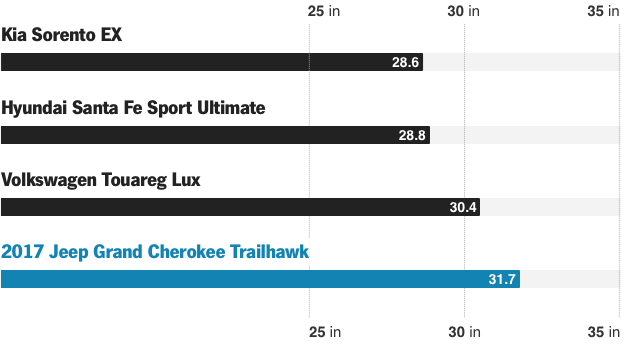
Test Results: Step-In Height
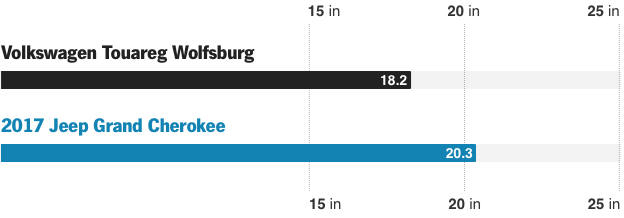
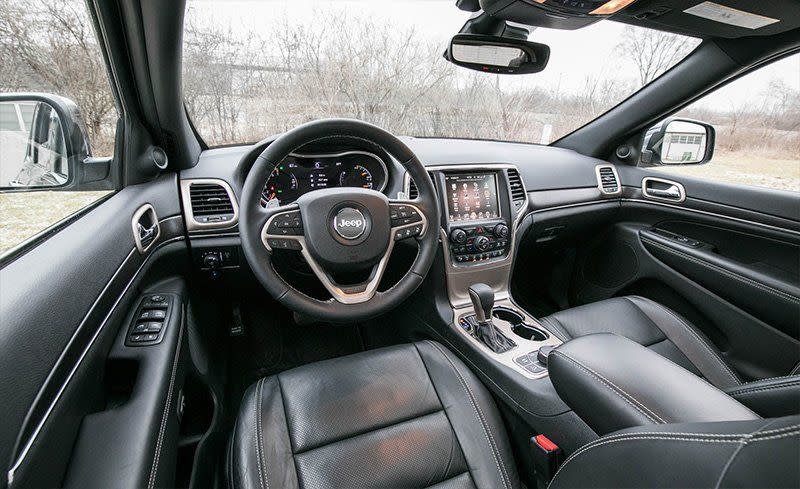
Blind Spots, Visibility, and Obscured Roadway
Roof pillars protect occupants in a rollover crash, but they also create blind spots. We determine visibility by measuring the location and width of each pillar using an H-Point Machine and a laser beam (surrogates for a driver and eyeball, respectively). Front and rear visibility are calculated by subtracting the viewable area blocked by the pillars from a perfect 180-degree score.
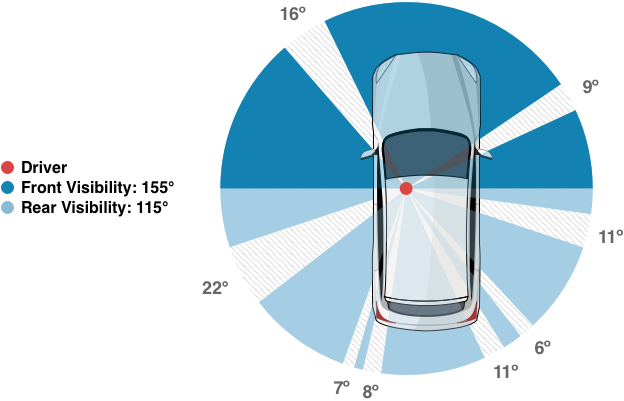
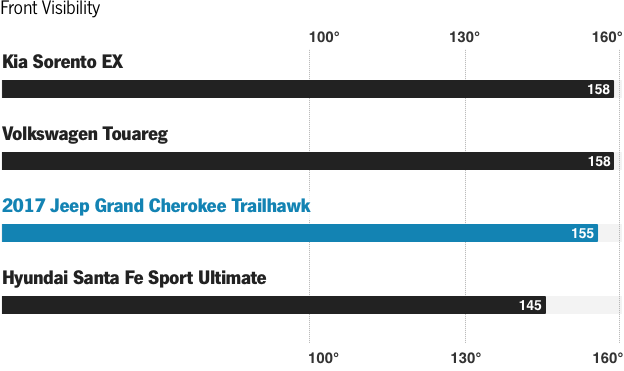
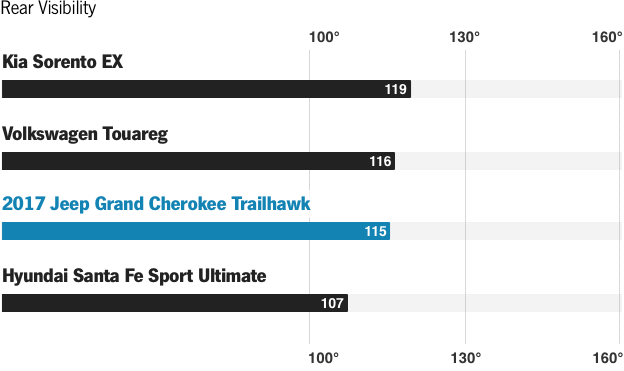

Test Results: Obscured Roadway
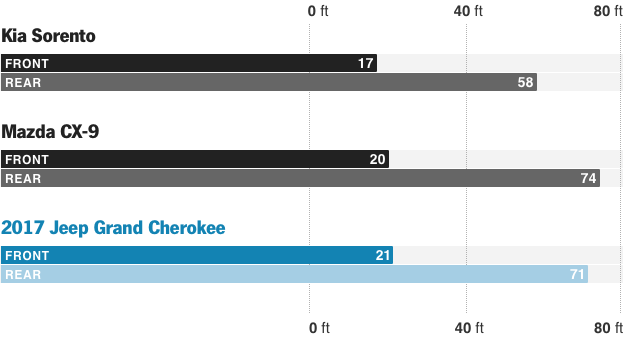
2018 Grand Cherokee In-Depth
You Might Also Like

 Yahoo Autos
Yahoo Autos 